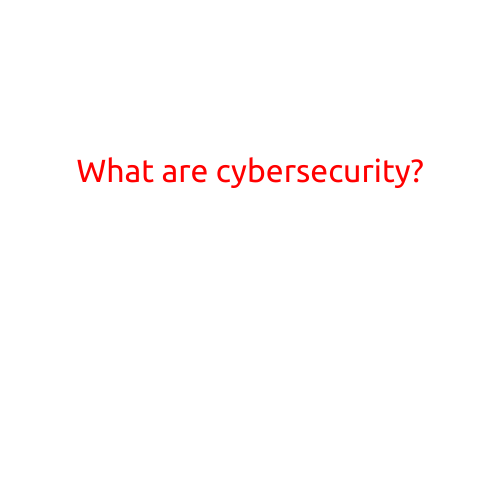
What are Cybersecurity?
In today’s digital age, cybersecurity has become a crucial aspect of our daily lives. With the increasing reliance on technology and the internet, the risk of cyber threats has also grown. Cybersecurity refers to the practices, technologies, and processes designed to protect digital information, networks, and computer systems from unauthorized access, use, disclosure, disruption, modification, or destruction.
What is a Cybersecurity Threat?
A cybersecurity threat is any type of attack or malicious activity that targets digital systems, networks, or devices. These threats can take many forms, including:
- Malware: Viruses, worms, Trojans, and other types of malicious software designed to harm or compromise computer systems.
- Phishing: Trickery emails, messages, or texts that trick users into revealing sensitive information, such as passwords or credit card numbers.
- Denial of Service (DoS) Attacks: Overwhelming a network or system with traffic in an attempt to make it unavailable or slow.
- Ransomware: Malicious software that encrypts files and demands payment in exchange for the decryption key.
- Data Breaches: Unauthorized access to sensitive or confidential information.
Why is Cybersecurity Important?
Cybersecurity is essential for several reasons:
- Protection of Confidential Information: Cybersecurity helps protect sensitive data, such as financial information, personal identifiable information (PII), and intellectual property.
- Prevention of Financial Loss: Cyber attacks can result in financial losses, including theft of money, damage to equipment, and interruption of business operations.
- Protection of Business Reputation: Cyber breaches can damage a company’s reputation, leading to loss of customer trust and market share.
- Compliance with Regulations: Many industries, such as healthcare and finance, have specific cybersecurity regulations that must be adhered to.
How Can Cybersecurity be Implemented?
Cybersecurity can be implemented through various measures, including:
- Firewalls: Network security systems that block unauthorized access to a network.
- Antivirus Software: Programs designed to detect and remove malware.
- Encryption: Techniques used to scramble data, making it unreadable to unauthorized users.
- Two-Factor Authentication: Additional security measures that require users to provide two forms of identification.
- Network Segmentation: Dividing a network into smaller segments to prevent the spread of malware.
- Regular Software Updates: Keeping software and systems up to date with the latest security patches.
- Employee Education and Awareness: Training employees on cybersecurity best practices and risks.
Conclusion
Cybersecurity is a critical aspect of modern life, essential for protecting digital information, networks, and computer systems from cyber threats. With the increasing reliance on technology, it’s crucial for individuals and organizations to implement robust cybersecurity measures to prevent attacks and maintain the integrity of their digital assets.





